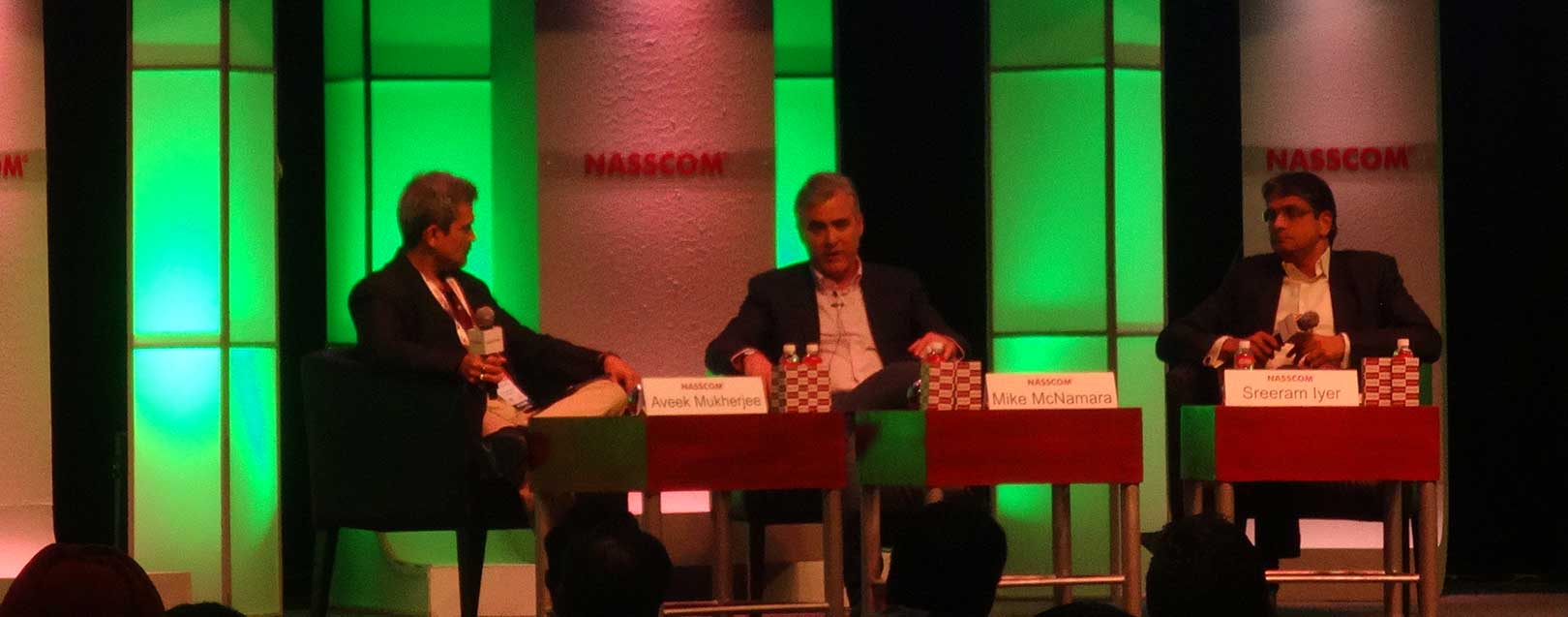
NASSCOM GIC Conclave 2017 redefines the role of modern GICs
Sneha Gilada
Global In-house Centres (GIC) are an integral component of the Indian IT industry and contribute significantly to the country's service export revenues. They have also been immensely beneficial to the economy in terms of employment generation. But the broad function of a GIC has changed dramatically in the last three decades, from being purely an operational vehicle delivering cost advantage by way of employing cheap labour; to driving strategic innovation and acting as a brand's window of penetration into new markets.
Celebrating the growing role of GICs in a modern day global enterprise, NASSCOM (National Association of Software and Services Companies) organised the 8th edition of its GIC conclave. The two-day event, inaugurated on April 20, was held in the city of Hyderabad, which is one among India's prominent IT hubs. The summit's prime theme concentrated on the transformation of GICs from being an 'extension' of enterprise, to being 'the enterprise'.
Sponsored by industry giants like HSBC, Target, Barclays, MetLife, E&Y and KPMG, the event had all the markings of a niche gathering corralled for the purpose of enhancing the role and contribution of GICs in India's economy.
Panel discussions were graced by the presence of eminent speakers from global enterprises, which use the GIC model as a successful mode of operation. Top executives from E&Y, Deloitte, A&Z, KPMG, Novartis, Target, JP Morgan Chase, Wells Fargo, American Express, HSBC, DBS, Goldman Sachs and many more, participated in the high-profile event as speakers.
On the first day, Manish Kumar, Head of Delivery, ThoughtWorks, spoke of the significance of GICs as he said, “According to a recent Nasscom report, about 60 % of the world’s multinationals have established their in-house centres in India in the last decade. Today, Global captives or Global In-house centres are an integral component of our country’s rapidly expanding IT-ITES sector. Increasingly GIC’s are transitioning from being cost centres to centres of innovation and excellence, delivering quality and strategic value. ThoughtWorks’ NUNE framework will help GICs to transition into R&D hubs while driving relevant and disruptive innovations across multidisciplinary disciplines.”
Speaking about the role of GICs in delivering a transformative customer experience, Mike McNamara, EVP, Target Corporation, said that its Bangalore establishment had achieved great milestones in leveraging CGI technologies to attain high-cost advantages for the online retailer of apparel and furniture.
"In the future, even administrative processes will be taken over by software engineers. So, we envisage a global shortage of certified engineers. The work will eventually flow to wherever the skills are," Mike said, speaking exclusively to The Dollar Business about the threat to India's outsourcing industry from growing protectionism and Trump's political moves to take jobs back to America.
ANZ Bank has one of its biggest GICs in Bangalore, with its five-location global GIC network employing close to 1,000 people. Defining leadership for GICs, Sreeram Iyer, COO, ANZ, said, "Leadership is too important to be left to the bosses."
Quoting automation as the biggest challenge faced by GICs in the coming years, panellists said that GICs must reinvent themselves to cope with technological advancements which may make customer support personnel redundant in the next five years. In this context, GIC leadership plays a dominant role.
Next generation talent management, disruptive potential of big data, imperatives for a global enterprise and the new reality tied to GICs were some of the salient themes around which other panel discussions revolved.






 to success.
to success.